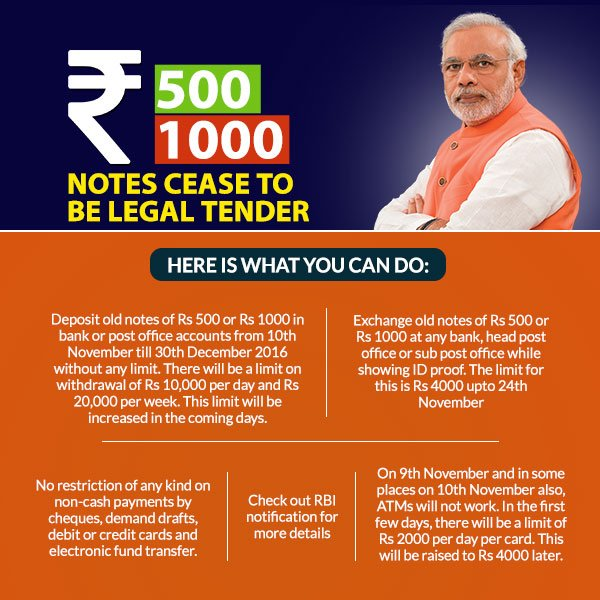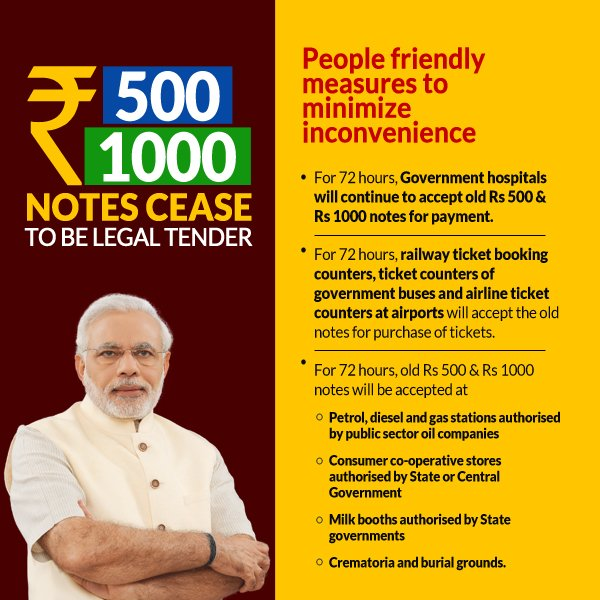"Corruption & Black money are accepted as a part of life. This thinking has afflicted our politics, administration and society like an infestation or termites. None of our public institutions is free from these termites"
Now is the time to change this
@narendramodi, 8th Nov 2016



Now is the time to change this
@narendramodi, 8th Nov 2016




125 crore Indians fought a decisive battle and WON #AntiBlackMoneyDay. Tell me what do you feel about the efforts to uproot corruption & black money?
@narendramodi, 8th Nov 2017

@narendramodi, 8th Nov 2017


@narendramodi, 8th Nov 2018 

Our intentions are noble and sensitive too, there is strength in our decisions and also in our intentions
Now with such intention, we set target of making the country a 5 trillion dollar economy
@narendramodi, 8th Nov 2019
@GouravVallabh 5,000,000,000,000 @sambitswaraj
Now with such intention, we set target of making the country a 5 trillion dollar economy
@narendramodi, 8th Nov 2019
@GouravVallabh 5,000,000,000,000 @sambitswaraj

Demonetisation has helped reduce black money, increase tax compliance and formalization and given a boost to transparency
These outcomes have been greatly beneficial towards national progress
@narendramodi, 8th Nov 2020
These outcomes have been greatly beneficial towards national progress
@narendramodi, 8th Nov 2020

• • •
Missing some Tweet in this thread? You can try to
force a refresh









